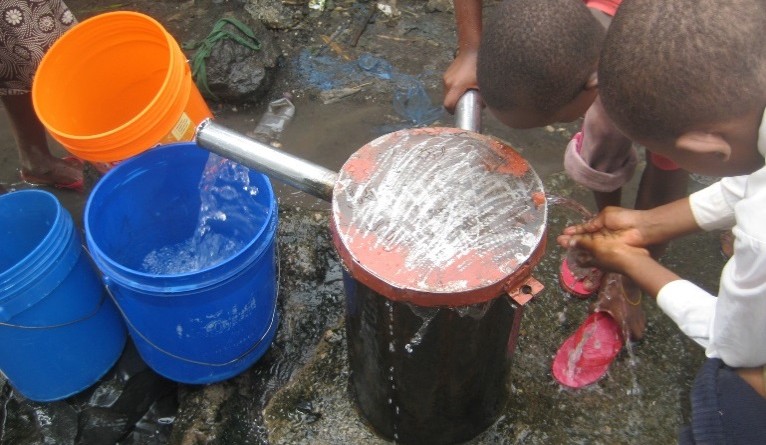A little story of an abandoned – but busy- borehole
By Carlos Enrique Aponte Rivero and Michelle Kooy
A little story of an abandoned – but busy- borehole
Osunyai is one of the newest Wards of Arusha city. The Ward is next to our project areas of Unga Ltd and Sombetini and shares many of the same characteristics in terms of water access. Most of the residents in Osunyai are low – income, and there is also a large population of tenants. The tenants rent one room for their entire family, for anywhere between 25,000-50,000 TZ shillings/month. These are some of the lowest rental rates across the city, and these Wards provide an important housing stock for poorest residents, often working in informal employment (trading, street business, food vendors).
In Osunyai Street there is one borehole providing the most important source of water for the people. The water is free! But this is not by design, but by default, and the failure of a previous development project. The borehole was drilled in 2010 by a project funded by the World Bank. The project was supposed to use local funds to construct a large storage tank and a decentralized distribution system surrounding the borehole – but this was never realized.
Explanations as to why the distribution network never appeared differ – everyone has their own story as to what happened, or even who was behind the project itself. Was it the city councils’ responsibility? Was it the initiative of an NGO? Does anyone in city government or the water authorities know – or care – about the borehole?
The result is that while the water is free for the surrounding residents there is no management. The tap is broken and the water flow cannot be stopped. Water flows continuously into the street, draining into a small canal, and eventually seeps back into the groundwater. For now – the residents don’t mind. Some of the residents use this for drinking and washing, other residents use the water only for non-potable uses. We checked the water quality of this source and the fluoride levels and nitrate levels met the Tanzanian water quality standards, although this does not in itself indicate drinking water quality. We found it interesting that the three dug shallow wells immediately next to this borehole had very high levels of fluoride.
This big hole was dug to build the water storage tank




